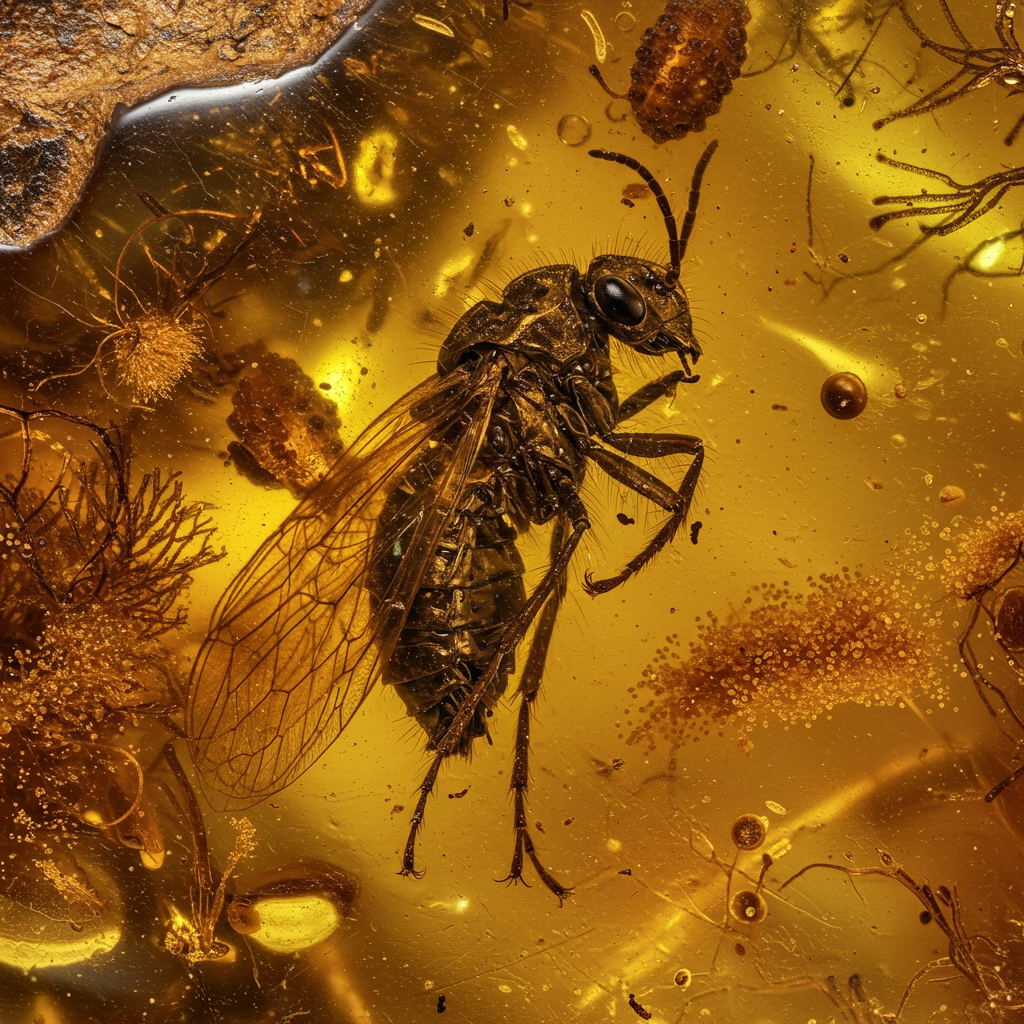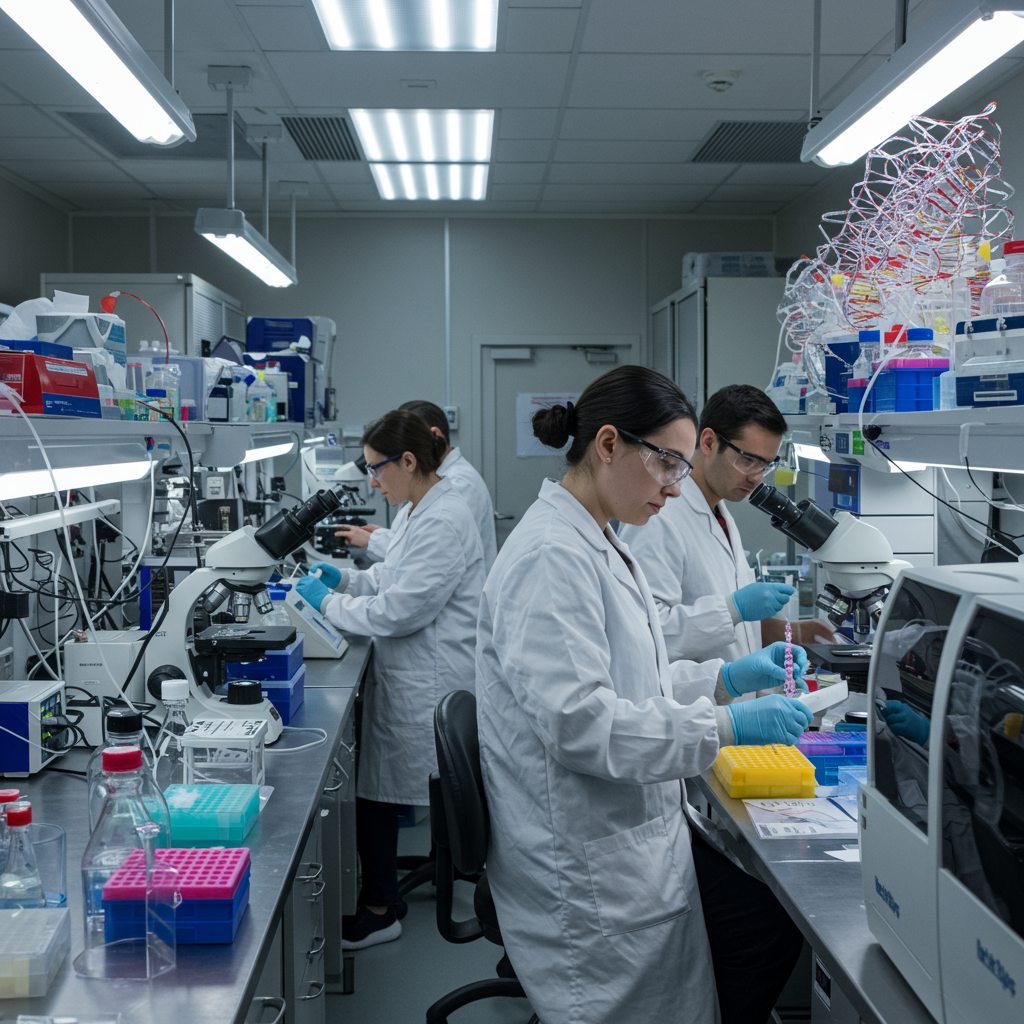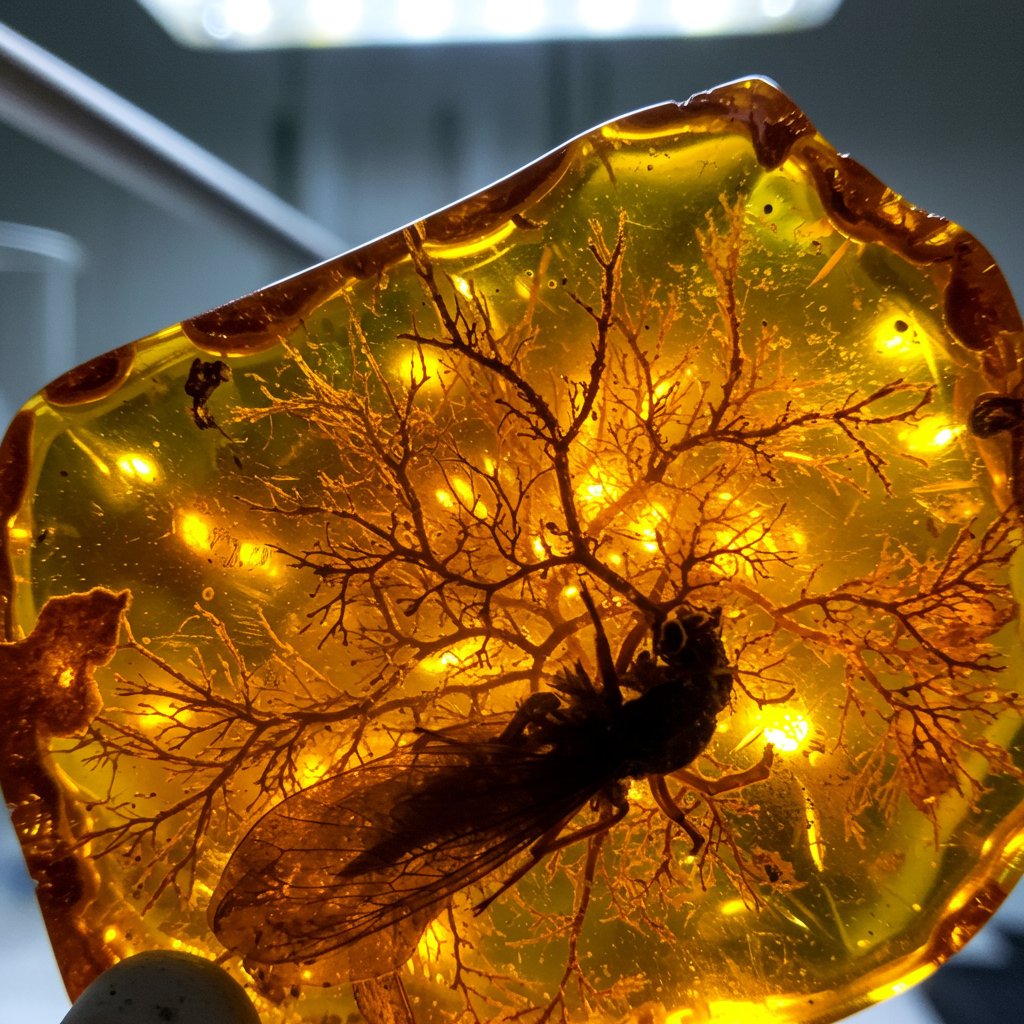Imagine a tiny, invisible killer drifting through the air during the age of dinosaurs. This wasn’t a giant predator, but something far more insidious: a fungus capable of turning insects into controlled, spore-spreading “zombies.” Recent findings in incredibly well-preserved amber fossils reveal that this chilling phenomenon existed 99 million years ago, long before humans or even many modern animals walked the Earth.
The discovery, detailed in the journal Proceedings of the Royal Society B: Biological Sciences, uncovers the oldest known evidence of parasitic fungi infecting insects, specifically targeting ants. Found encased in ancient tree sap that hardened into amber, these Cretaceous-era insects met a fate straight out of a horror story, predating their final encapsulation.
A Fungus Straight Out of Science Fiction (and Reality)
Reminiscent of the fictional cordyceps in “The Last of Us,” the fungal pathogen belongs to the same family known to scientists today as Ophiocordyceps unilateralis. These fungi operate by invading their insect hosts, manipulating their behavior to reach strategic high points before erupting from their bodies to release infectious spores onto unsuspecting victims below.
While this life cycle sounds grim from a human perspective, scientists highlight the ecological role these entomopathogenic fungi play. As Professor Edmund Jarzembowski, an associate scientist at London’s Natural History Museum and study co-author, noted, “It’s fascinating to see some of the strangeness of the natural world that we see today was also present at the height of the age of the dinosaurs.”
Professor Jarzembowski added that because these infections are lethal, Ophiocordyceps and its ancient relatives likely served an important function in controlling insect populations during the Mid-Cretaceous period, much like their modern counterparts do today.
Amber: A Window to Ancient Parasitism
Finding concrete evidence of such ancient parasitism is incredibly rare. Typically, preserving the soft tissues necessary to observe these infections is difficult over millions of years. However, amber possesses a unique ability to encapsulate and preserve intricate biological details, making this discovery possible.
The exceptional preservation allowed researchers not only to identify the fungal infection but also to formally name two new ancient fungus species:
Paleoophiocordyceps gerontoformicae
Paleoophiocordyceps ironomyiae
These microscopic insights offer a valuable, rare snapshot into the early evolution of entomopathogenic fungi and their complex interactions with insects during a pivotal period in Earth’s history. The next time you see an ancient amber fossil, remember that sometimes, the most terrifying stories are found within the smallest, oldest details.




